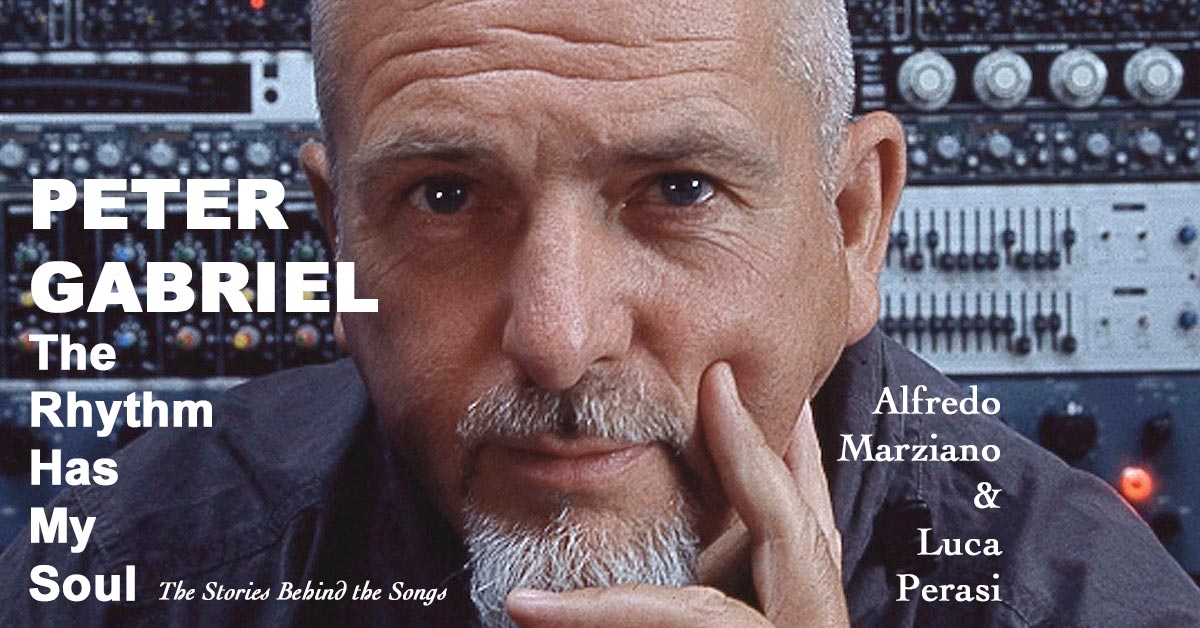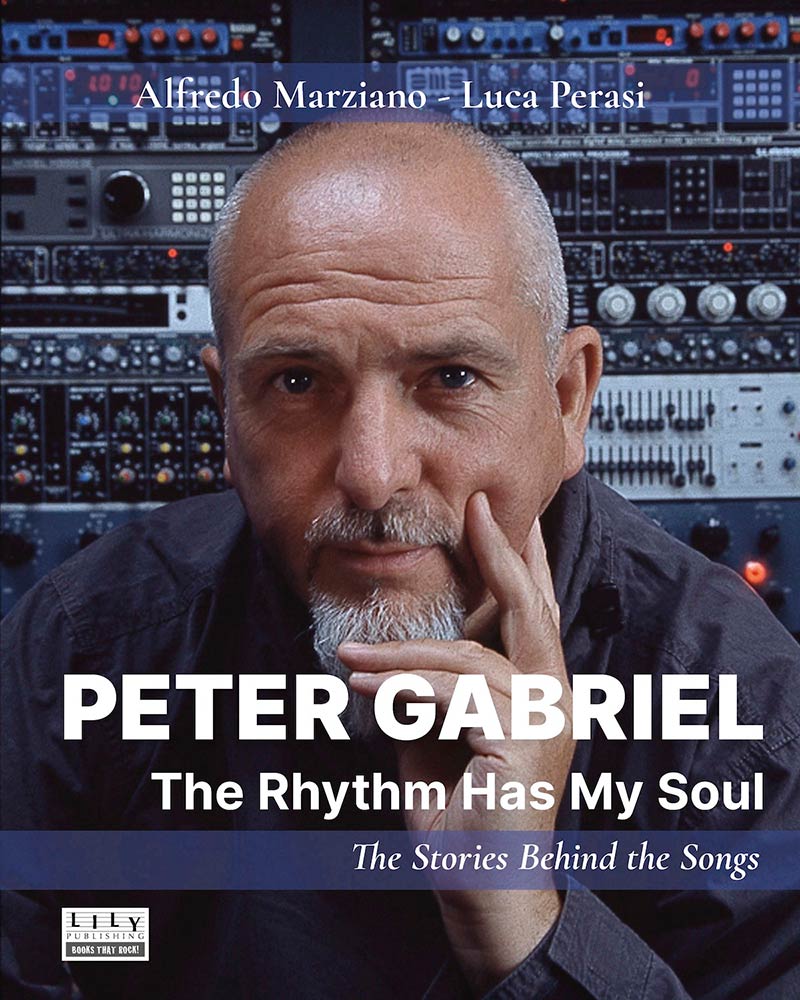- Article
- Read in 3 minutes
Peter Gabriel – The Rhythm Has My Soul (Alfredo Marziano, Luca Perasi, 2024 – Book review
The Rhythm Has My Soul is a book that looks behind the stories of every Peter Gabriel Song and it was released in Januaryv 2024. Martin Klinkhardt shares his thoughts.

This is where I’m at: Books that talk about an artist’s oeuvre song by song are somewhere between tiring and tedious to me. It’s because they are encyclopedic by nature. Also, the authors tend to give some songs way more space than others. Because they have favourites. Or because they simple run out of steam.
What lies in front of me is a new book called Peter Gabriel – The Rhythm Has My Soul, subtitled The Stories Behind The Songs. It’s a brick of a book that makes, say, Chris Welch’s book about the songs of Genesis look like a leaflet. 28 by 22cm, 320 pages, a handful of black and white images – it’s a coffee table reference book rather than a handy companion for the road. Its authors are Italian journalists who have written for Classic Rock, the Rolling Stone and others. Alfredo Marziano has a previous Peter Gabriel book under his belt (Suoni senza frontiere, 1998). Luca Perasi has written about Paul McCartney; he is co-author of the authorized Italian translation of Macca’s lyrics.
Peter Gabriel’s songs are “multi-layered, cross-referencing pieces of art” that form “a map of subtexts and hypertexts”, thus enabling a deeper understanding of the world and la condicion humaine, the authors state in the introduction. The songs are examined in five aspects. First off is the method, the technique of songwriting. Then there is the way Gabriel deals with his songs. A third aspect is the way the musicians work in the studio. The finished product is analysed for its musical shape and the lyrics. The focus is on the inspiration for the songs and the story of their recordings. They also add a list of alternate versions; the guardians of the Peter Gabriel Compendium on our website will certainly read those bits very attentively (but then they themselves are often a source used in the book). What is mostly left out is the lyrics and their interpretation.
 The book covers 205 numbered pieces (up to and including the i/o material) that Peter Gabriel wrote on his own or with others, as well as cover versions. Eighteen songs that have not seen an official release are counted separately.
The book covers 205 numbered pieces (up to and including the i/o material) that Peter Gabriel wrote on his own or with others, as well as cover versions. Eighteen songs that have not seen an official release are counted separately.
Marziano and Perasi decided to discuss the songs in their chronology. Every album is given an overall appreciation along the five parameters set out earlier. Separate subchapters look into other songs recorded during the album sessions as well as other songs from the era. The authors have assembled lots of information on who worked on a particular song and where and how. This in itself is most commendable and no mean feat. Memories of the people involved and some anecdotes bring the events to life and expand the book beyond the encyclopedic approach.
The book is very rich in footnotes, or rather sides notes, giving the sources. Some chapters sport up to 80 notes, while others have very few. Marziano and Perasi draw from a large variety of sources. In fact, The Rhythm Has My Soul seems to be the first book about Peter Gabriel to draw on not only own interviews and website information, but also on interviews and reports in music magazines. The list of books used is short, and it seems a bit unfortunate that they use Easlea a lot because that book frequently deviates from how things are described almost everywhere else without giving a source for that. On the whole, though, there is no reason to doubt that Marziano and Perasi have tapped many sources in their research.
The Rhythm Has My Soulcloses a gap in the discussion of Peter Gabriel’s oeuvre. What we already have is the historiographic approach and a sort of literary analysis of the songs lyrics (albeit the literature in both regards sorely needs updating), what Marziano and Perasi give us is the technical development of the songs. They do not look, as it were, at the meaning or the history of the house, but on the technical drawing and the craftsmen who created it. We haven’t had that before.
by Martin Klinkhardt
The Rhyhm Has My Soulis available online (paperback and hardcover editions), e.g. at amazonUK* and other stores.
* this is an affilate link.

